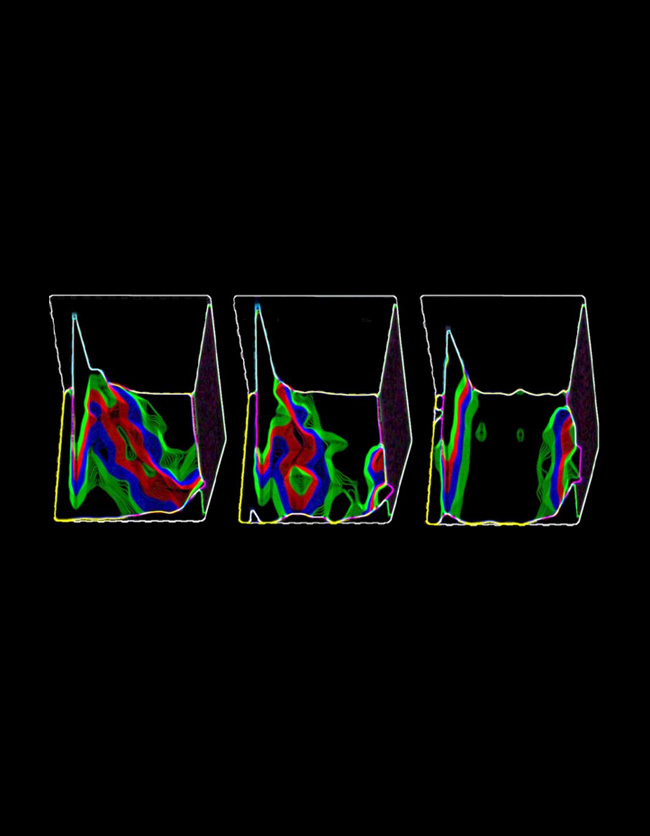Yann Gambin is watching how certain proteins clump together, leading to cell death and Parkinson’s disease.
Together with Emma Sierecki, he is using single-molecule approaches–to watch proteins working with each other–that are ten times faster than traditional approaches.
The “cell-free protein expression system” allows Yann do away with the need to purify proteins beforehand, a time-consuming step that can also potentially alter protein structure and function, thus providing misleading results.
Yann –the first EMBL Australia group leader to be appointed to Single Molecule Science at UNSW– is using this technique to solve different problems caused by proteins misbehaving in diseases affecting the brain, heart, muscles and more.
See EMBL Australia profile.
In cells, proteins do not work alone; they often cluster to signal more efficiently. In some extreme cases, proteins self-associate to create polymers and particles. Protein aggregation is often linked to pathologies but protein polymerization can also occur under physiological conditions. Using single molecule techniques, we are screening for new self-assembling behaviours, a process that turns out to be more common than previously believed.
The study of protein aggregation is based on new developments in single molecule spectroscopy. Proteins can be expressed in E.coli, mammalian cells or using a cell-free expression system.
We use a hybrid method—similar to photon counting—between ‘pure’ single-molecule spectroscopy (only pM concentrations required) and fluorescence correlation spectroscopy, which measures protein diffusion times to perform brightness analysis of time traces acquired at higher concentrations (μM). This enables rapid and precise determination of the size of oligomers and quantification of large, but rare, aggregates that would be undetected at extreme dilutions.
The use of genetically encoded fluorophores such as GFP or Cherry allows shortening of purification and labelling steps. Oligomerisation is studied directly in the translation mixture, as the proteins are being translated.
We have developed a two-colour version of this technique, allowing detection of co-aggregation events.
Misfolding and pathological aggregation of proteins is a hallmark of many neurodegenerative diseases. In Parkinson’s or Alzheimer’s disease, the formation of protein aggregates and plaques is known to create havoc in the cells.
In synucleinopathies such as Parkinson’s disease, the Lewy bodies constitute the final stage of α-Synuclein aggregation in cells. Although synuclein is the main component of Lewy bodies, these structures contain more than 70 proteins. All these components may not participate in the formation of the structure itself but might be recruited at a later stage or just be “sticky” proteins. Our first task is to identify which proteins can co-aggregate and decipher the order in which these aggregates are formed.
Another question is whether there is a trigger to the misfolding of synuclein. We want to screen a list of potential interactors of synuclein and interrogate the folding of synuclein upon binding with interactors. Our hypothesis is that some interactors may prompt synuclein to adopt a fold susceptible to aggregation.
Recent discoveries, that ASC and MAVS—two protein adaptors—can create massive protein aggregates in immune cells with prion-like behaviours, are shifting our views on protein aggregation. Rather than being an undesirable process, prion-like assemblies can play a role in protective immunity. Indeed, the particles can be released upon cell death and “infect” other immune cells to amplify the immune response.
We first want to see how common this phenomenon is by identifying new proteins that can self-assemble and whose aggregation is self-propagating. We will analyse the impact of aggregation on signalling and validate the triggering events that lead to prionisation. Our hypothesis is that these objects act as super-sized signalling platforms, creating a boost to signalling in response to a threat. Finally, finding new prion-like behaviours under physiological conditions will help us understand how cells can deal with the formation of super-size objects or keep it in check. This could in turn open up new avenues for the treatment of pathological aggregation.

